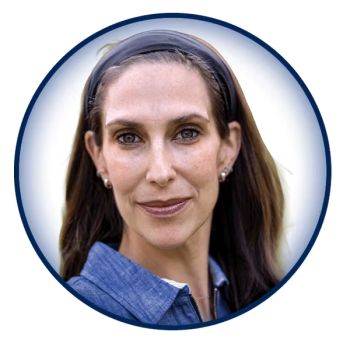
Eating Disorders in Minority and Marginalized Populations
What kind of person comes to mind when you think of eating disorders? Here’s why you might be wrong.
Conjure up an image of someone with an eating disorder.
If I had to guess, she’s a young, emaciated, white, cisgendered, heterosexual female from a middle- or upper-class family. Maybe she is a dancer; perhaps she gets straight As in school. Her family might have trouble expressing emotions. Maybe her mom was chronically dieting while she was growing up.
Now, imagine you are sitting in a lecture hall back in undergrad—one of those large ones with 300+ students and a teacher at the bottom of the stadium-like room that you could barely see.
Did anyone in that room look like the girl you conjured up? Maybe yes, but more likely than not, the answer is “no.” In that room were likely bodies of all shapes, sizes, and genders. And in that room, there were individuals with
Eating Disorders: Misconceptualized and Stereotyped
Until relatively recently, stories of eating disorders seemed to exclusively center on what has been stereotypically depicted as the “classic eating disorder.” Typically, this affects exactly the type of individual we conjured up earlier—a young, emaciated, white, cisgendered, heterosexual female from a relatively affluent background. Movies like To the Bone with Lily Collins and stories from celebrities ranging from Karen Carpenter to Tracey Gold have grabbed our attention for years with their dramatic
Despite greater awareness of eating disorders in the United States, the types of individuals who experience eating disorders remain largely misconceptualized and highly stereotyped, leaving out most of those who struggle. Males, individuals of color, and those in the
Although risk factors themselves may differ across minority populations based on factors more unique to specific groups, the types of behaviors individuals engage in remain consistent and fall into 3 basic categories: restricting,
The Unique Challenge for Minority Populations
Individuals of color and those in the LGBTQ+ community often face unique challenges that may place them at greater risk for developing eating disorders. Research suggests that starting at age 12, gay, lesbian, and bisexual teens may be at higher risk for binge eating and purging compared with their heterosexual peers.2 Black and Hispanic teens have a higher prevalence of disordered eating patterns compared to their white peers.3,4
The risk factors, stereotypes, and stigma associated with minority populations regarding weight, body image, and dieting contributes to these groups experiencing significant hurdles in accessing care and ultimately overcoming their eating disorders. Individuals of color, male-identifying individuals, and those in the LGBTQ+ community are less likely to seek treatment in the first place, often related to cultural barriers, fear of rejection, and discrimination. Many in marginalized communities do not access care due to not fitting the cultural stereotype and fearing that others may not take their illness seriously.
Indeed, health care professionals themselves are less likely to ask those in minority populations about eating disorder symptoms due to bias. In 1 study, when clinicians were presented with identical cases demonstrating disordered eating among white, Black, and Hispanic women, clinicians were more than 50% less likely to identify the Black woman’s behavior as problematic and recommend she should receive professional help.5
Minority populations may face greater adverse life experiences including trauma and homelessness, among others. They are more likely to have public insurance or to be uninsured. In the increasingly privatized sector that is eating disorder treatment, this can make accessing care nearly impossible for those in marginalized and/or minority communities. The existence of academically affiliated, community-centered health care programs with expertise in eating disorders are few and far between in the United States, making it less likely that those on public insurance and those who are uninsured can even access care in the first place.
What Type of Person Has an Eating Disorder?
Although eating disorder awareness has improved in the United States, there still seem to be many misconceptions regarding the types of individuals who have eating disorders.
When marginalized individuals develop eating disorders, it is often not due to a desire to be thin. After all, eating disorders are not solely about food or thinness. Eating disorders go much deeper than that. Stereotypes such as “gay men are all muscle or thin” and “all individuals with
In many cultures, specifically the Latinx culture, love is often shown through food, with women being raised to learn to cook and care for the household, while men are raised to make a living and support the family financially. This split can create a sense of isolation for women and men as they learn to put others’ needs first and do not ask for help, which can make seeking care difficult in this situation.
Asian Americans and Pacific Islanders (AAPI) are often part of close-knit communities who shun signs of weakness and negative emotions. As such, disordered eating may be pushed aside due to the stigma of it representing “weakness.” Individuals in this community often come from achievement-oriented families with high parental expectations, which are correlated with high rates of perfectionism—a predictor of
Most tools developed to screen for and assess eating disorders were developed among groups of young, white females. Males/male-identifying individuals have often been excluded not only from research, but also by treatment settings that historically have catered to the young female demographic. People of color with self-reported eating and weight concerns were significantly less likely than white participants to have been asked by a doctor about eating disorder symptoms, despite similar rates of eating disorder symptoms across ethnic groups.6 Eating disorders are not screened for universally in primary care or psychiatric settings. As a result, they are often missed, unless patients from stereotyped backgrounds/with classic presentations come to clinical attention.
I have worked with individuals from the Black community who have had gastric bypass surgery while actively struggling with an undiagnosed eating disorder—not because the symptoms were not there, but because no one asked. These individuals now struggle not only with their eating disorder, but with the sequala of a surgical procedure that was not indicated. One individual I recall working with—a Black middle-aged, lesbian woman with a severe trauma history—was only diagnosed with an eating disorder years after her surgical procedure due to a myriad of medical complications as a result of malnourishment. While she existed in a fat body, she struggled with atypical anorexia—her care was complex and required a team of interdisciplinary providers to get her on a path to recovery.
Not everyone in a fat body has an eating disorder, not everyone in a thin body has an eating disorder, and not everyone in a “normal” sized body has an eating disorder. But you can have an eating disorder in any one of these bodies. If you belong to a marginalized community, chances are you will not even be assessed for symptoms of an eating disorder.
As a psychiatrist with subspeciality training in both child and adolescent psychiatry and eating disorders, we know that the best predictor of recovery is early intervention and treatment—weight restoration for those who require it and cessation of the binge/purge cycle when present. Most importantly, individuals must learn (sometimes for the first time) how to appropriately nourish their bodies. Initially it is with rigid meal and snack schedules, but over time, an intuitive eating approach is possible for most, once return of hunger and satiety cues occur. The longer someone struggles with any eating disorder, the harder it is to recover, as the more entrenched the cognitive distortions, rigid rules, and behaviors become. However, treatment and recovery are possible no matter where the individual is along the course of the illness.
Concluding Thoughts
Because eating disorders thrive in secrecy, those suffering often do not seek care. It is imperative that we, as clinicians, screen for and provide access to treatment that is culturally competent and informed to those in need. Most physicians receive little to no training in eating disorder identification, let alone treatment provision. We must invest in the education of our workforce. Although there are a variety of programs out there for eating disorders, most are private, most accept only private insurance (if they accept insurance at all), and many do not accept patients with significant cooccurring psychiatric illness. This must change—because if we increase screening and detection of eating disorders among minority and marginalized populations, we must have evidence-based, high-quality care to refer them to for treatment and recovery.
If you or someone you know is struggling with an eating disorder, know that treatment is available, recovery is possible, and hope for a better tomorrow exists.
Dr Goetz is an instructor in the Department of Psychiatry at Harvard Medical School and an attending physician in child and adolescent and general adult psychiatry at McLean Hospital. She specializes it the care of individuals with eating disorders.
References
1. Marques L, Alegria M, Becker AE, et al.
2. Parker LL, Harriger JA. Eating disorders and disordered eating behaviors in the LGBT population: a review of the literature. J Eat Disord. 2020;8:51.
3. Goeree MS, Ham JC, Iorio D.
4. Swanson SA, Crow SJ, Le Grange D, et al.
5. Gordon KH, Brattole MM, Wingate LR, Joiner TE Jr.
6. Becker AE, Franko DL, Speck A, Herzog DB.
Newsletter
Receive trusted psychiatric news, expert analysis, and clinical insights — subscribe today to support your practice and your patients.













